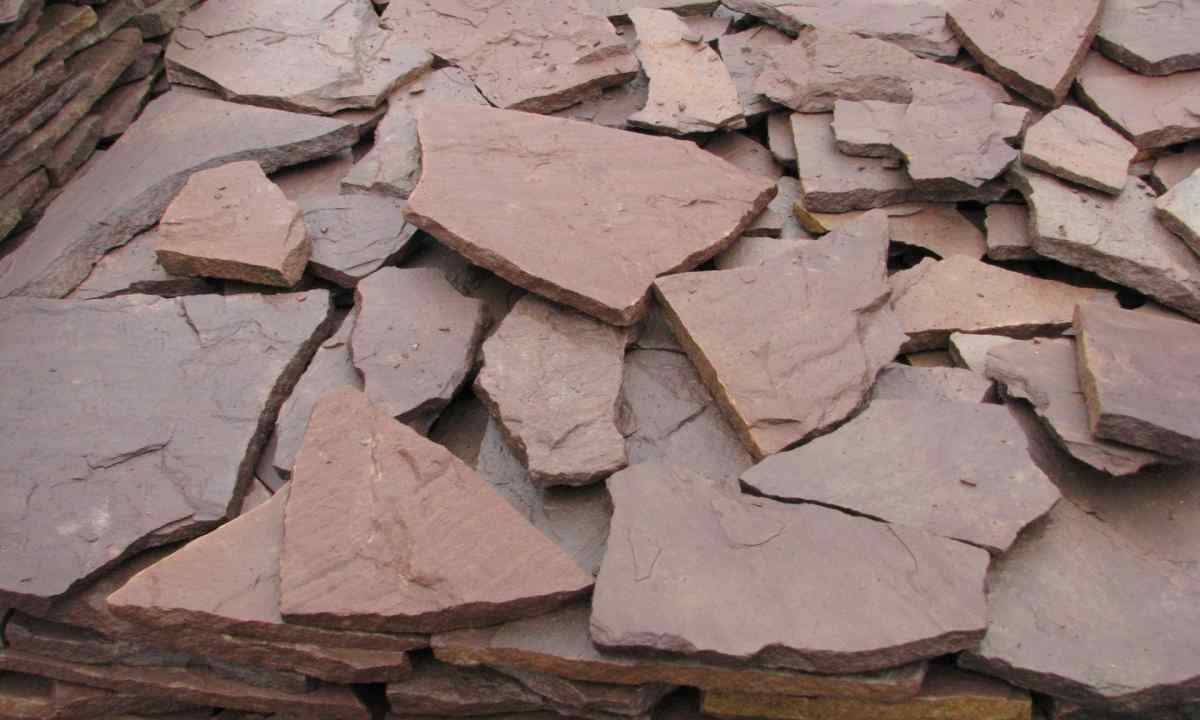Beautifully issued facade of the house gives to the building complete and unique look. The special identity is guaranteed by use of "wild", that is crude, primitive natural stone. The taken from the nature in untouched look, such stone was applied at civilization dawn.
Wild stone: general information
The natural (wild) stone is optimum material for creation of the comfortable, esthetically sustained and favorable habitat. It is clean in terms of ecology, differs in durability, is pleasing to the eye. The buildings trimmed with wild stone are attractive and picturesque. The choice of this material for finishing is considered sign of refined style and delicate taste.
Being nature element, the wild stone is characterized by a number of geological, technical and decorative signs. Extract such material in natural fields then it undergoes processing and arrives on construction objects in the form of the pieces of breed formatted and unformatted plates.
The range of application of wild stone is rather wide. It is used when dressing architectural forms, for creation of interesting interior and landscape compositions. The wild stone finds the application also at laying of retaining walls, construction of columns and columns. The unformatted pieces of breed which have received the name of rubble stone suit for forming of the Alpine hills and other objects approximate to natural landscape. However the most interesting decisions with use of natural stone can be received when finishing facades of residential units and other buildings.
Edges at fragments of wild stone have the fragmentary form, the front surface differs in rough relief. The feature of natural stone is that at all desire two fragments absolutely similar among themselves will not turn out to find. The invoice of separate elements is unique; any imitating material will not be able to copy it. Technology plates produce on several dimensional to the sizes, thickness of plates is 10-30 mm.
Merits and demerits of wild stone
The natural covering will reliably protect building facade from influence of external factors. The stone breed is capable to maintain considerable mechanical loadings without change in shape. The wild stone has no restrictions on life cycle, it keeps the properties for centuries.
The wild stone is safe in terms of ecological purity. Quite often producers and sellers of artificial imitations of natural stone say that the wild stone can be radioactive. It is not true. The similar myth should be considered manifestation of unfair competition, the aspiration to advance own products which in many respects are inferior on qualities to natural materials is its cornerstone.
Variety of rocks of which form decor fragments differs in wide range of textures and colors that gives the chance to create original options of finishing of facade.
To wild stone temperature drops, cruel precipitation, influence of ultraviolet are not terrible. This material is not subject to ignition and decay. It can melt only at extremely high temperatures.
Porous breeds to which refer sandstone, shell rock, limestone pronitsayema for air, and therefore perfectly support air exchange in the building.
Carry solid weight to shortcomings of wild stone that leads to increase in labor input and raises requirements to durability of the basis of facing of facade. High hardness and durability of wild stone can become minus: this characteristic also does material processing by difficult occupation. One more essential shortcoming: rather high cost of wild stone.
The most popular types of wild stone
Types, types and categories of wild stone are defined by physical and technical characteristics of material which treat: durability, resistance to mechanical influence, moisture resistance, wear resistance, radioactivity and so on. Accounting of such characteristics allows to accept weighed the decision on use of any given kind of wild stone for the planned works and also it is correct to choose the tool.
Limestone. This stone weighs a little and costs not much. Its basis are organic matters: the pressed sinks of small marine animals containing calcium. Limestone differs in high ecological qualities, high level zvuko- and thermal insulations. This stone has excellent bactericidal properties. Well gives in to processing. Low resistance to moisture influence is considered lack of such breed.
Sandstone. Rather cheap rough wild stone with high esthetic properties. Has beige, yellowish, sometimes chocolate color. Sandstone is resistant to wear, but it is impossible to polish it. It is widely used in facing of facades of buildings. Many centuries from such material in Russia built mansion of the nobility.
Marble. Such stone turns out at gradual consolidation of calcareous rocks. The dense structure of material is combined at marble with comparative ease of processing. Gamut of color and invoices differs in variety. For this reason the artificial options of finishing try to imitate marbled. It is considered the most popular material for finishing of facades.
Slate. It is grayish, green, blue or black layered material of the volcanic nature. It is resistant to influence of moisture and to high temperatures. Processing of slate does not represent complexity.
Labradorite. Such stone belongs to rocks of magmatic origin. The drawing of material has bluish, red or yellow shade. Labradorite differs in high esthetic properties.
Granite. Dense, firm and very strong natural stone of magmatic origin. Granite is not afraid of atmospheric actions at all. Variety of color and texture give to stone very rich look. However the big weight and high cost do mounting very difficult and costly.
Porphyry. On structure and exterior reminds granite. Tone of stone – dark red. Surface of material smooth. This wild stone perfectly is polished, differs in durability and hardness.
Dolomite. Mineral with high esthetic properties. It is resistant to atmospheric influences. However the relative scarcity of tones and versions of the invoice could not lead this stone to class of especially popular finishing materials.
Syenite. Porous magmatic breed of light tones. Syenite is strong, well takes out on temperature drops and is polished. However this material is subject to aeration.

